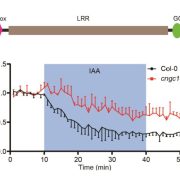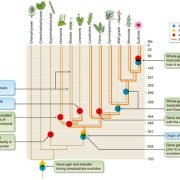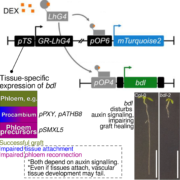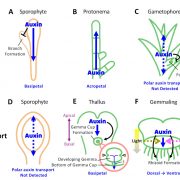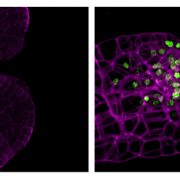No auxin signaling, no organogenesis
Hidemasa Suzuki, Hirotaka Kato, Megumi Iwano, Ryuichi Nishihama, Takayuki Kohchi
Background: Land plants alternate diploid (2n) and haploid (n) generations. The plant hormone auxin regulates many aspects of plant development. In flowering plants, auxin is essential for survival of the diploid generation but is dispensable in the very short haploid generation. In contrast to flowering plants, bryophytes spend most of their life cycles as haploids.
Question: Is auxin signaling dispensable for haploid viability in bryophytes?
Findings: We addressed this question with the liverwort Marchantia polymorpha by knocking out the sole auxin receptor gene, MpTIR1. We found that the knockout mutants of MpTIR1 were able to grow as cell clumps but were incapable of forming any organs. Three-dimensionally organized development occurs in mature plants and gene expression profile analysis showed that the developmental status of the mutants was in transition from immature plants to mature plants. We also found that expression profiles of auxin-responsive genes were consistent with this separation. From these data, we conclude that auxin signaling is dispensable for cell survival but critical for organ formation in the haploid-dominant bryophyte M. polymorpha.
Next steps: In land plants, organs are formed around stem cells, but not from stem cells themselves. How is auxin signaling used differently in the microenvironment around stem cells? Alternatively, how is auxin signaling excluded from stem cells? Analyzing upstream and downstream regulation by auxin signaling should provide clues to these key questions.
Reference:
Hidemasa Suzuki, Hirotaka Kato, Megumi Iwano, Ryuichi Nishihama, Takayuki Kohchi (2023) Auxin signaling is essential for organogenesis but not for cell survival in the liverwort Marchantia polymorpha. https://doi.org/10.1093/plcell/koac367



